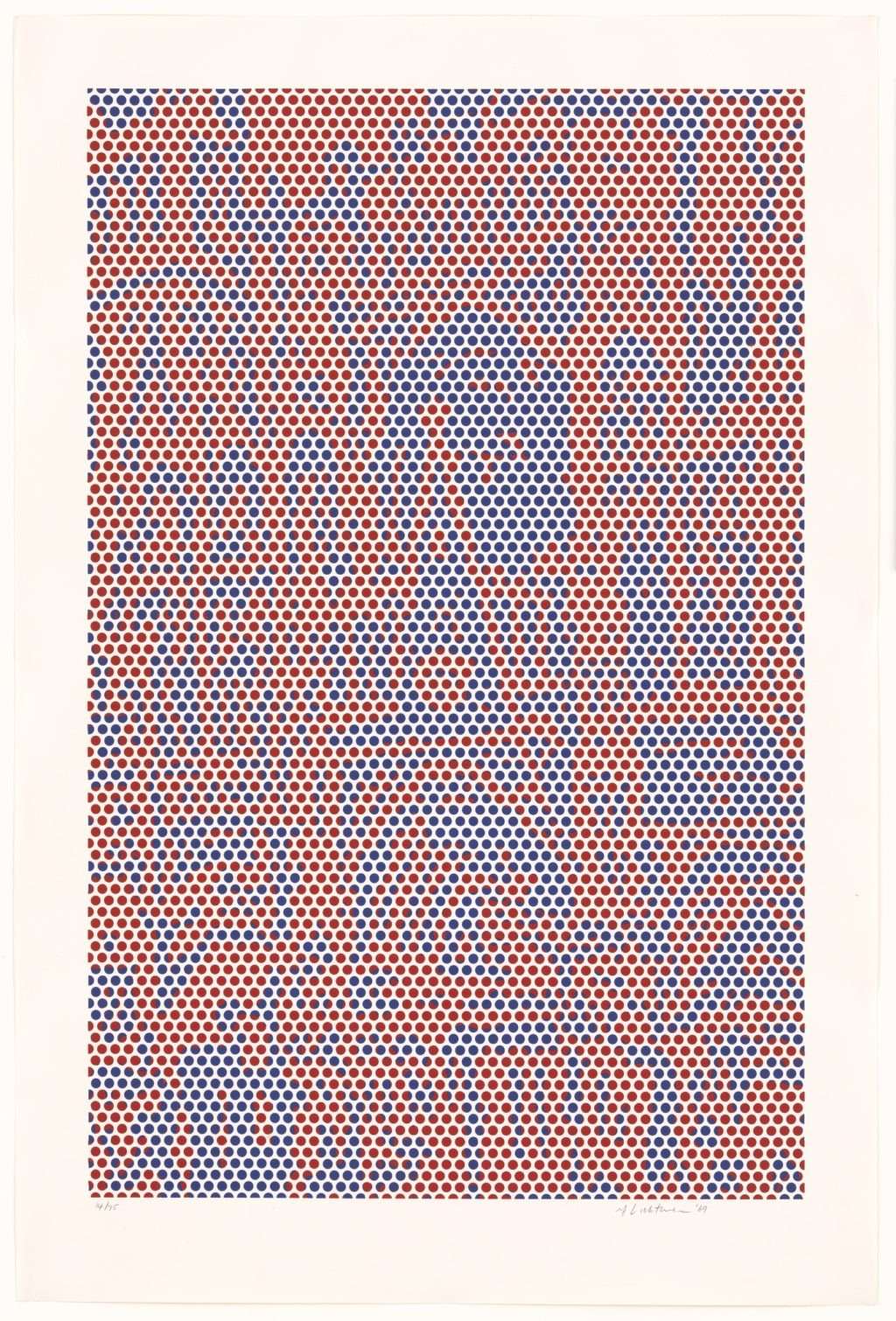
Roy Lichtenstein
Buy original Roy Lichtenstein artworks from ArtLife, including signed prints from across his career. Learn more about Roy Lichtenstein life and work here.
Artwork
Biography
Roy Lichtenstein was born on 27th October 1923 in Manhattan, New York, and developed an interest in art and design while at school. He enrolled in summer classes under American painter Reginald Marsh during his last year of high school, then went on to study at Ohio State University. Despite having his studies interrupted by a three-year tenure in the US army, he received his Master of Fine Arts degree in 1949, and later taught at the institution,.
Lichtenstein held his first solo exhibition at the Carlebach Gallery, New York in 1951. After a six year stay in Cleveland, he returned to New York and began creating pieces marking a shift away from the prevailing Abstract Expressionism movement. In 1958, while teaching at the State University of New York at Oswego, he started featuring iconic cartoon characters like Bugs Bunny and Mickey Mouse in his abstract pieces.
His interest in pop culture imagery was cemented once he began teaching at Rutgers University in 1960, and his work was heavily influenced by fellow artist and colleague Allan Kaprow. By this point, Lichtenstein was using cartoon graphics and techniques inspired by commercial printing, and soon rose to prominence as a leading figure in the pop art movement alongside Andy Warhol, Jasper Johns, James Rosenquist and Claes Oldenburg. In 1961, his work was first shown at New York’s Castelli Gallery, immediately receiving worldwide attention. Lichtenstein eventually left his teaching position to immerse himself in New York’s vibrant art scene full-time.
Though Lichtenstein’s work attracted plenty of fans, his focus on the way his subjects were portrayed in commercial media meant he also drew significant criticism. Many of his most successful pieces closely resembled existing comic book panels, leading Life magazine to run a 1964 piece asking whether he was “the Worst Artist in the U.S.”, as a challenge to the perceived lack of depth and originality of his art. In response, Lichtenstein argued that: “My work is entirely transformed in that my purpose and perception are entirely different [from the original pieces].”
By the late 1960s, Lichtenstein had stopped producing pieces with a cartoon influence, instead focussing on recreating works by early twentieth century greats like Pablo Picasso and Henri Matisse in his signature style. He also painted comic-like images of mirrors, still lifes, and domestic household interiors, while also producing sculptures and screenprints.
Lichtenstein died of pneumonia in New York on 29th September 1997. He was survived by Dorothy Herzka, his second wife, and his two sons from his previous marriage.
In his lifetime, Lichtenstein created more than 5,000 paintings, prints, drawings, sculptures, and murals. His work brought a fresh perspective to the American art scene, and his paintings are still widely known around the world. The artist’s best known pieces typically feature block colors, bold outlines and Ben-Day dots—a late 19th century printing method where small colored dots are combined and spaced to create color and shade. This was sometimes employed in extreme measure, such as in his 1969 piece Cathedral #2
His distinctive techniques and subject matter conveyed the images of consumerism reflected in American society at the time, parodying cartoon characters, comic book scenes and advertisements with dark undertones of facetious wit and humor. This allowed him to inject clichéd visuals with a fresh sense of cultural significance, forcing people to rethink the distinction between high art and consumer culture.
Arguably his most famous work is Whaam!, which shows a fighter plane firing a rocket. Another is Drowning Girl, depicting a girl neck-deep in water with a melodramatic, comic-style thought bubble reading: “I Don’t Care! I’d Rather Sink Than Call Brad For Help!”
Though he is mostly remembered for his paintings, Lichtenstein’s sculptures were also widely acclaimed. He was even commissioned to create a 25-foot-high sculpture for the Port Columbus International Airport in Columbus, Ohio, called Brushstrokes in Flight, and El Cap de Barcelona—or The Head of Barcelona—for Barcelona’s Summer Olympics in 1992. His three-dimensional pieces like Mobile II still feature the flat planes of color, patterns and thick outlines his paintings became famous for.
Lichtenstein’s work is incredibly valuable today—his 1962 pop art painting Masterpiece sold for a huge $165 million in January 2017. Timeless and ever-popular, his impressive original artwork is still desired by collectors around the world, and the vast portfolio of paintings, prints and sculptures available here at ArtLife offers something for everyone .Please contact us if you wish to make an offer on a work of Roy Lichtenstein’s art, and we’ll be happy to address any queries you may have.


